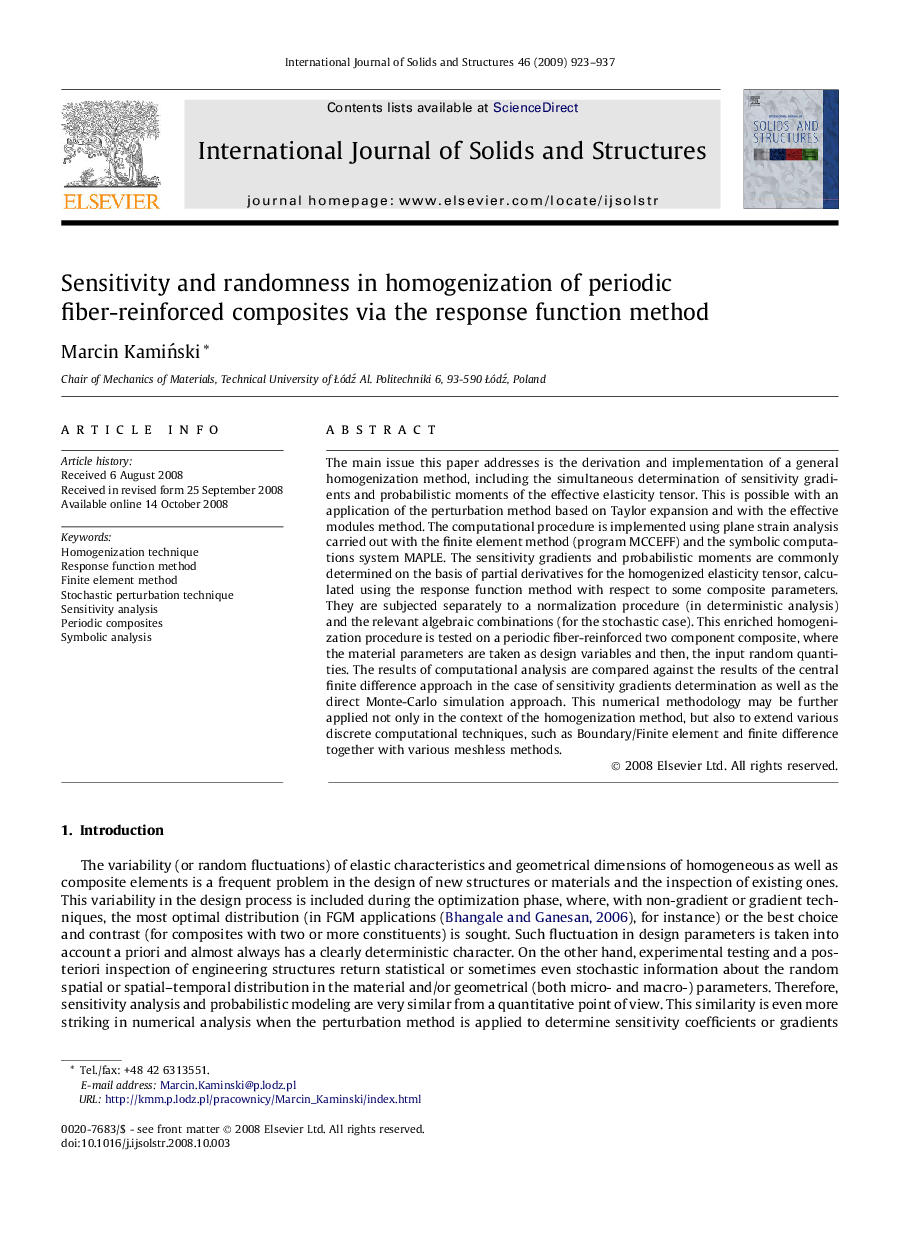| Article ID | Journal | Published Year | Pages | File Type |
|---|---|---|---|---|
| 279416 | International Journal of Solids and Structures | 2009 | 15 Pages |
The main issue this paper addresses is the derivation and implementation of a general homogenization method, including the simultaneous determination of sensitivity gradients and probabilistic moments of the effective elasticity tensor. This is possible with an application of the perturbation method based on Taylor expansion and with the effective modules method. The computational procedure is implemented using plane strain analysis carried out with the finite element method (program MCCEFF) and the symbolic computations system MAPLE. The sensitivity gradients and probabilistic moments are commonly determined on the basis of partial derivatives for the homogenized elasticity tensor, calculated using the response function method with respect to some composite parameters. They are subjected separately to a normalization procedure (in deterministic analysis) and the relevant algebraic combinations (for the stochastic case). This enriched homogenization procedure is tested on a periodic fiber-reinforced two component composite, where the material parameters are taken as design variables and then, the input random quantities. The results of computational analysis are compared against the results of the central finite difference approach in the case of sensitivity gradients determination as well as the direct Monte-Carlo simulation approach. This numerical methodology may be further applied not only in the context of the homogenization method, but also to extend various discrete computational techniques, such as Boundary/Finite element and finite difference together with various meshless methods.
